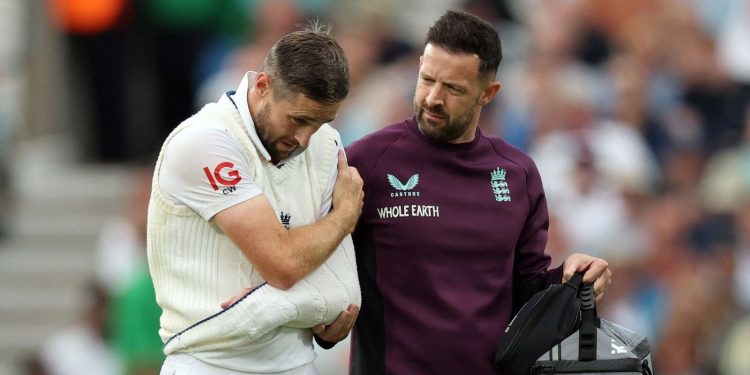Chris Woakes‘ shoulder injury, which prompted the England pacer to leave the pitch during the 57th over of India’s first innings on Day 1 of the fifth Test, was discussed by former Indian batsman Sunil Gavaskar. Woakes was trying to intercept a boundary shot by Karun Nair when he landed awkwardly on his left shoulder.
After receiving prompt medical attention from the England physiotherapist, Woakes was shown returning to the dressing room while wearing his jumper as a makeshift sling. “Stopping the ball to save just one run was unlikely to make a significant impact on the match and ultimately came at a high personal cost,” Gavaskar said, casting doubt on the bowler’s risk.
“First and foremost, I don’t understand fast bowlers trying to save one run. Your main job is to bowl. So that one run is not going to make a huge difference unless it is such a tight match, you are coming towards the end. I see these fast bowlers diving and sliding. I believe they should not be doing it,” Gavaskar said on Sony Sports as quoted by NDTV Sports.
Notably, the concussion substitute rule in cricket only allows for a like-for-like replacement in the event of a concussion. A substitute fielder may be employed for fielding or wicketkeeping in any other injury situations, but they are not permitted to bat or bowl.
“If it is an obvious injury and it is clearly something that you have seen happen. A break or fracture for example. There should be a like-for-like substitute. You are allowing for a wicketkeeper if he is injured, but not in the playing XI. For example we saw Dhruv Jurel coming and keeping wicket in the previous game (Manchester Test). You are allowing that because that is Rishabh Pant’s speciality,” Gavaskar added.
With just 18 Test caps across the remaining bowlers, England’s bowling attack lacks experience as a result of Woakes’ absence in the fifth Test. Woakes bowled 14 overs on Day 1 before being shelved, recording figures of 1 for 46. He has bowled 181 overs and taken 11 wickets during the Anderson-Tendulkar Trophy.







